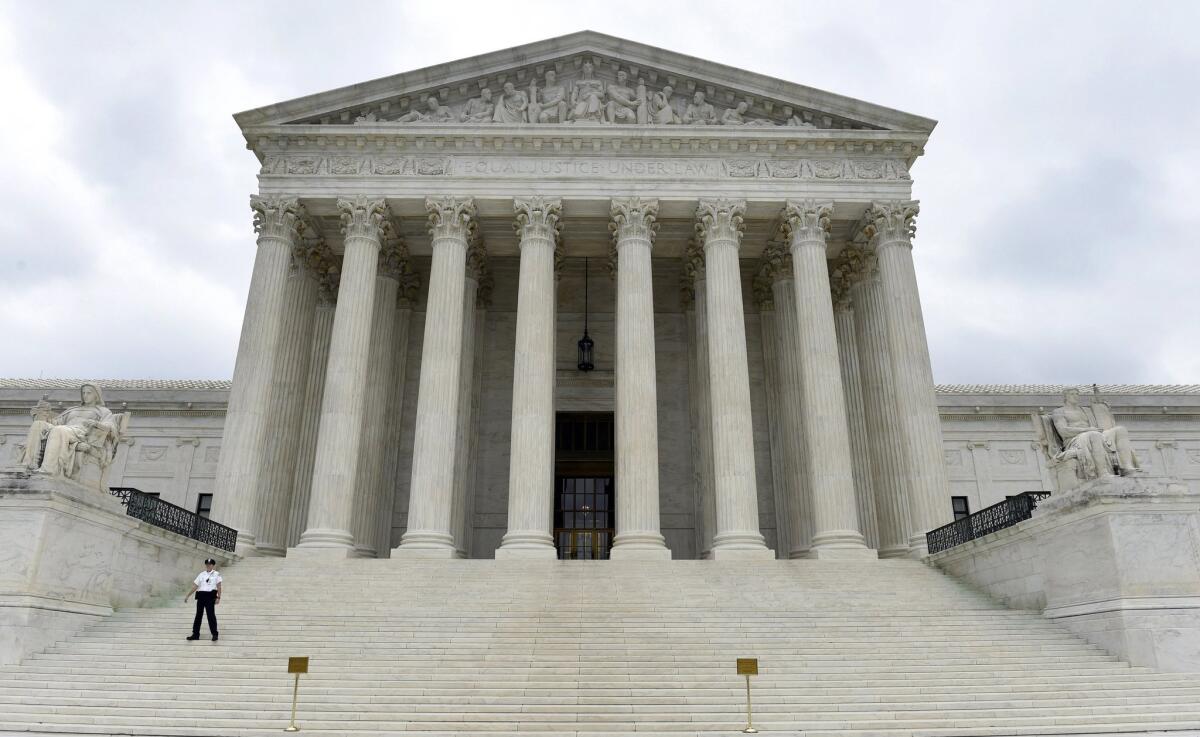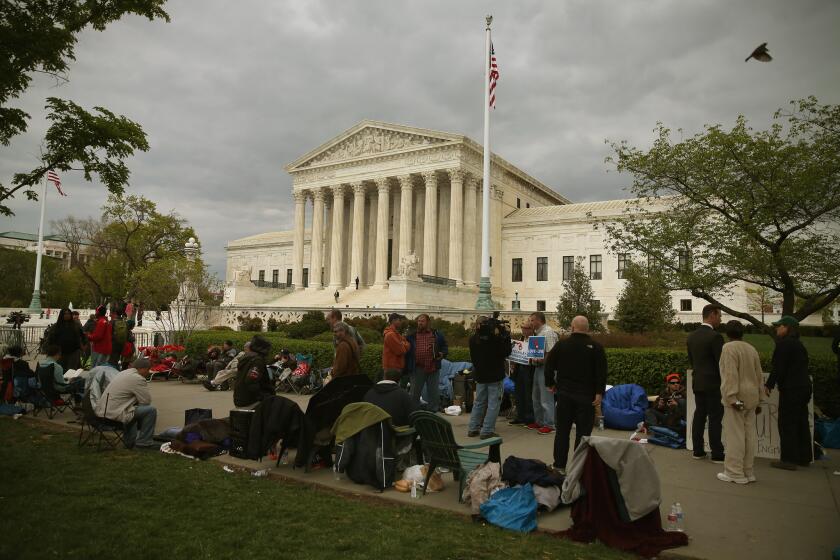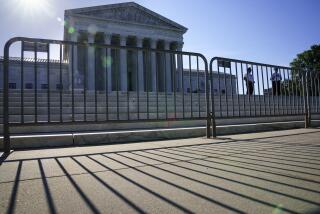Editorial: It shouldn’t have taken a pandemic for the Supreme Court to embrace transparency

- Share via
Forced by the COVID-19 pandemic to postpone oral arguments in several cases, the Supreme Court on Monday announced that it would let the public listen in real time to oral arguments by lawyers and the revealing questions and comments by the justices.
It’s a welcome step, but it should have occurred long ago.
The policy should be made permanent once the pandemic subsides and in-person arguments resume. And the court should take its newfound commitment to transparency even further, by following the lead of Congress and allowing television cameras to broadcast its public proceedings. If reporters and a handful of fortunate spectators can watch the thrust and parry of oral arguments, ordinary citizens should have the same access. Technology makes that possible.
The Supreme Court changed one important rule this year. These changes would open things up even more.
Before Monday’s announcement, the court had postponed four weeks of oral argument in several cases, including attempts by Congress and a New York grand jury to obtain President Trump’s financial records. Those cases and several others — including two cases raising the question of whether members of the electoral college may defy the will of the voters — will be argued in May over the telephone.
Audio streams of those proceedings will be shared with the news media, which will be able to relay them live. In addition, a court spokeswoman said, the audio likely will be posted on the court’s website on the same day. Usual practice is for the court to hear arguments on Mondays, Tuesdays and Wednesdays but not post the audio until Friday. (Transcripts of arguments are posted the same day.)
Obviously the court reacted to the circumstances created by the pandemic. The alternative to arranging for arguments by phone would be to postpone the resolution of important cases. Also, although the court is unlikely to admit to being influenced by public opinion, a poll conducted in late March found that 72% of respondents said that the justices should convene online during the pandemic to hear oral arguments.
But it would be a mistake to characterize this as an example of necessity being the mother of invention. Long before anyone had heard of COVID-19, transparency advocates urged the court to post same-day audio of oral arguments on its website. The court has done so in a few high-profile cases — including the arguments in 2012 involving the constitutionality of the Affordable Care Act — but the practice should be routine. Public interest in arguments is likely to be at its highest on the day a case is debated.
That may be why the justices prefer to delay posting the audio until Friday, when news organizations are less likely to air sound bites from the justices’ comments — such as the late Justice Antonin Scalia’s famous comparison of a government mandate to purchase health insurance with a hypothetical law requiring people to buy broccoli. A related concern is that timely sharing of audio from oral arguments might tempt justices or advocates to grandstand — an argument that arises with even greater force when it’s proposed that the court’s oral arguments be televised.
But the grandstanding argument is bogus. There is no jury at Supreme Court arguments, and lawyers know that the justices don’t appreciate histrionics. As for the justices themselves, there is little indication that they would play to the “crowd” of remote listeners any more than they do to the audience in the courtroom. (And Scalia was far more flamboyant than most justices in his comments, even when audio wasn’t going to be posted the same day.)
Another tired argument against more transparency for the court’s public proceedings is that the court is not like Congress, which long ago welcomed television cameras to its chambers and committee rooms.
Yes, the court is not supposed to be a partisan political institution, a point Chief Justice John G. Roberts Jr. has emphasized. But it is an important institution with an awesome influence on the lives of Americans that ranges from the way police enforce the criminal law to the scope of the right to marry. And while oral arguments aren’t the only factor in the justices’ deliberations, they illuminate the case for and against a legal proposition and provide some insight into how individual justices view their role.
In the same poll in which a large majority said that the court should hear oral arguments remotely during the pandemic, 64% of respondents said that the court should allow television coverage of arguments. Americans should be able to see as well as hear those proceedings even in the absence of a health emergency.
More to Read
A cure for the common opinion
Get thought-provoking perspectives with our weekly newsletter.
You may occasionally receive promotional content from the Los Angeles Times.











